-
Car Reviews
- All reviews
- Midsize SUVs
- Small cars
- Utes
- Small SUVs
- Large SUVs
- Large cars
- Sports SUVs
- Sports cars
- Vans
Latest reviews
- Car News
-
Car Comparisons
Latest comparisons
- Chasing Deals
Munich’s small SUV grows up, gets bigger and brings new tech – but a well-optioned xDrive20i M Sport isn’t our favourite spec
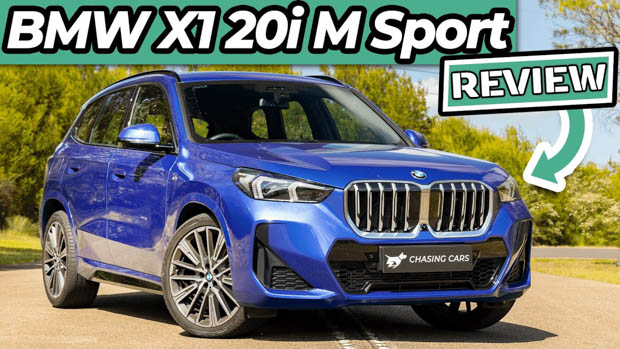
“Nice X3,” remarks my neighbour, mistaking BMW’s new X1 xDrive20i small SUV for its midsize sibling.
It’s an easy misconception to make given this bolder, third-generation brings a style and swagger that makes it look and feel as large as, well, a small family hauler should be, from its bulging grille down to its 20-inch wheels.
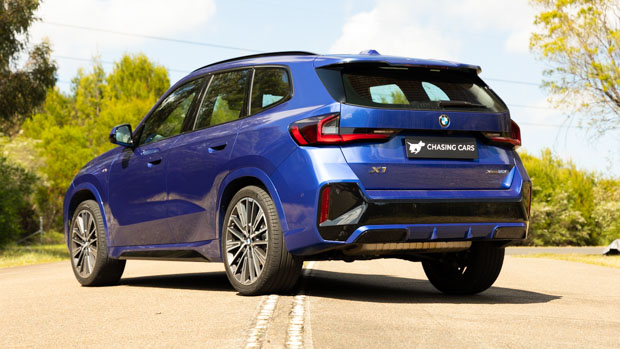
At 4.5 metres neat, the new X1 nudges against a threshold that Chasing Cars considers categorically medium in length.
It’s amazing that some markets still call the segment it sits in ‘subcompact’, as increasingly ill-fitting as that term is. Despite this, small SUV protagonists continue their unyielding growth, both in size and pricing.
With 54 extra millimetres front to rear, the new-gen ‘U11’ X1 is about the same length as the first-gen X3. Against its gen-two F48 forebear, it’s also grown in height (+44mm), width (+24mm) and wheelbase (+22mm).
But increasingly clever packaging yields interior cabin and luggage space – 1600 litres with row two stowed – much closer to more recent X3s.
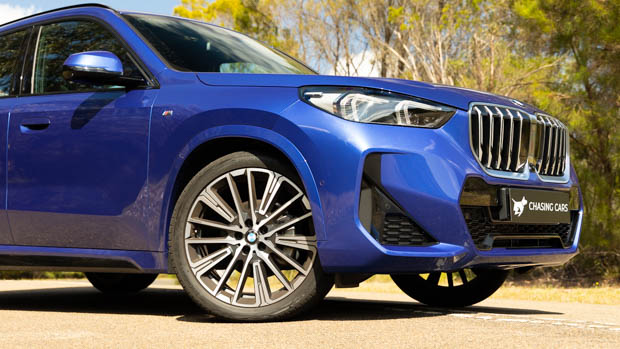
Here on test is the new high-spec xDrive20i, with 2.0-litre turbo four power and all-wheel drive, starting from $65,900 list. This variant trim plays against premium all-paw rivals such Audi Q3 40 TFSI quattro S-line ($58,400), Cupra Formentor VZx ($61,990), Mercedes-Benz GLA 250 4Matic ($77,300) and Volvo XC40 B5 Ultimate B5 Dark ($63,990).
Pricey? Well, the last ‘F25’ X3 (2011-2017), with a largely similar powertrain, actually kicked off cheaper – around $62k – just a few years ago. The fiscal creep now sees today’s all-paw petrol X3, the xDrive30i, starting off from just under a frosty $90k…
“So why would you buy an X3 then?” asks my neighbour after a quick tour of the new X1. Precisely. You don’t have to read too closely between the lines to see that BMW – and its premium German contemporaries – are starting to peddle the perception that small is the new medium.
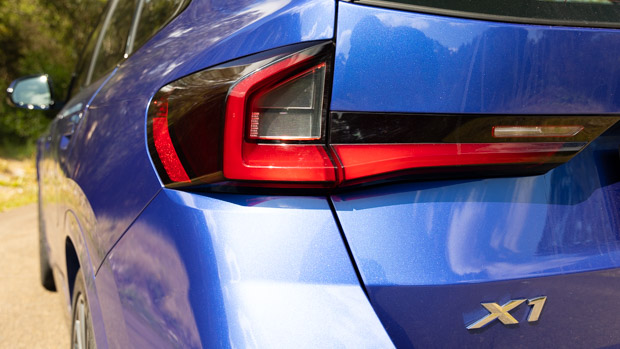
For its part, the entry sDrive18i, at $53,900 list, makes a solid case for the credential of X1’s core goodness. Its newfound girth is augmented by a solid features list includes the SUV range’s fancy new dual-digital screen showcase. It’s certainly no stripper and one at, by today’s measure, a quite enticing price.
The xDrive20i before you, though, adds M Sport accoutrement ($3000) for what lists as a standalone variant for a cool $68,900. On top of that, our test car fits $8800 of extras such as an Enhancement Package ($4000), 20-inch wheels ($2000) and Vernasca leather ($2800) to arrive at $77,700 list. Or well north of $80k on road.
For its considerable $21,800 premium above the X1’s tip in point, you do get the big 2.0-litre engine, on-demand AWD and adaptive M Sport suspension.
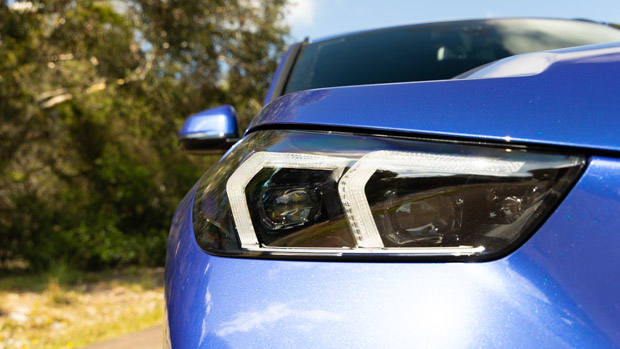
Unsurprisingly, its swag of features is brimming, from adaptive LED headlights to the panoramic glass roof and from the head-up display to its long list of driver assistance systems such as all-singing, all-dancing camera viewing to a Reversing Assistant that records forward trajectory, 50 metres at a time, and can retrace a course automatically in reverse.
Handy, one imagines, for extricating from very tight parking situations.
But for all of its trinkets, the xDrive20i really needs to stake a claim as an evolved and improved experience against what has been, to date, fairly patchy X1 providence through i’s former generations. So while it looks more grown up, it needs to perform as much.
Is it fair to expect sporting character and performance from this small SUV? Of course it is.
Its M-fettled namesake, those 20s, the lowered M Sport suspension and the racy M Portimao Blue paintwork – named after the wonderful Portuguese racetrack – make strong sporting promises outside.
Inside, it’s reinforced by sculpted race seats and a chunky wheel with ‘Sport Boost’ activation by holding down the left-hand paddle-shifter. It does bait with the promise of a solid and tangible fun factor.
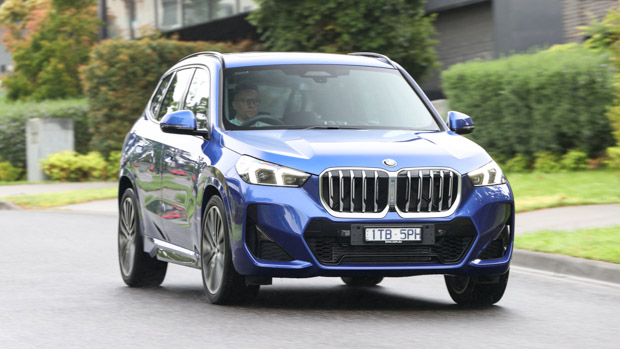
At 150kW and 300Nm, the new 20i’s 2.0-litre turbo petrol four is nine kilowatts and 20Nm up on the old front-driven 20i.
Healthy, it seems, though it’s no firecracker. In fact, the new 20i tune is also short by 20kW and 50Nm against the last-gen xDrive 25i…which, at $62,900, was cheaper than what currently sits here as its surrogate replacement.
Further downstream, gone is the old eight-speed torque converter auto, replaced by a seven-speed dual-clutch gearbox, paired with on-demand all-paw traction.
Performance? The claim for the xDrive20i is 7.4 seconds. The reality, however, isn’t quite as rosy.
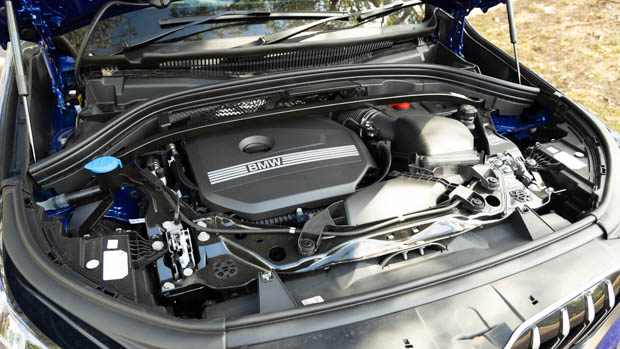
The best we could manage with independent testing was 7.79 seconds. Even using the Sport Boost mode – holding the left paddle for a second to kick the powertrain and chassis into full attack – the sharpest time the X1 could muster was 7.88sec.
The xDrive20i just doesn’t get off the mark with much enthusiasm, its soft-launching behaviour perhaps servicing mechanical sympathy for the dual-clutch transmission. And it’s off and jogging, the turbo four-pot never really swings in the mid-range or hits a decent stride in its top end.
The seven-speed is very slick and smooth on the march, but there’s little fire in the powertrain’s belly. Its character is ho-hum, no matter which drive mode you choose.
There’s a touch of rortiness under full throttle, but the X1 pretty much maintains a lacklustre manner in broader default, one that certainly panders to wider SUV owner tastes if is a little too tame for this version’s M Sport pitch.
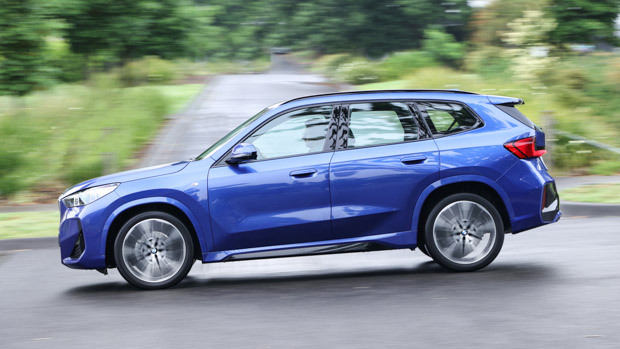
It’s quiet and polite nature doesn’t trade for fine polish around town. On the move, general drivability and response is quite polished, though the stop-start system – its defeat four multimedia submenus deep – and the dual-clutch gearbox conspire together for tiresome off-the-mark hesitation.
Thankfully the stubby little transmission selector offers a tap-for-sport remedy to putty up the hole in response, though it’s a temporary fix that demands you knock it back to normal once on the move as sport mode is too fizzy and highly strung for dignified around-town driving.
Fuel consumption, though, is on point. Off a 7.2L/100km claim, our example swayed between high sevens and low eights for heavy traffic through to fives for clear open road cruising.
Like the sDrive18i version, the all-paw 20i is fundamentally a superior drive to its predecessor. Despite sharing common architecture, BMW has clearly invested in platform revisions that bring more engagement and life to the small SUV’s manner.
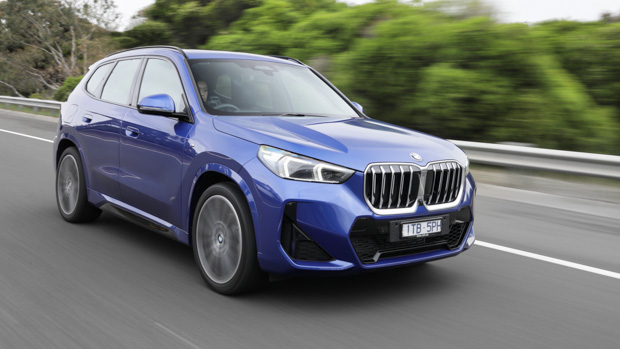
The steering is well connected and nicely fluid, there’s ample grip from the chassis even when you push on and there’s a level of cooperation with the driver that was lacking in the old F48, which originally lobbed as BMW’s initial foray into front-driven SUVs.
A quicker steering rack and so-called ‘near-actuator wheels slip limitation’ smarts claim to augment agility, though any tangible effect is quite subtle.
There’s little sense of all-paw traction, or indeed if the rear axle ever clocks on for duty, at least in grippy dry running. Perhaps there’s a real advantage on broken surfaces, though those licorice strip 20-inch tyres probably shouldn’t venture too far off on a beaten path.
Frankly, the turbo four-pot just can’t muster up enough mid-range torque to allow the all-wheel-drive system to contribute to the X1’s dynamic talents under power.
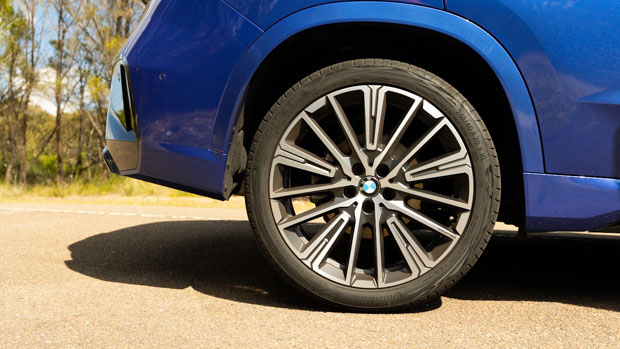
The plus-sized rolling stock isn’t out to do ride comfort many favours, while the lowered M Sport suspension damping doesn’t put much compensation into compliance.
The system is adaptive, though its calibrations seem to switch between firm and firmer and the ride does get quite sharp at low speed. There’s also an uncouth knock from the front axle.
Otherwise, the ride and handling balance is quite decent – and indeed improved – if not exactly rave-worthy by any measure. Perhaps the chubbier tyres and softer passive damping found downstream might make for a more resolved X1 experience.
Highlights? It’s very quiet: find a nice stretch of smooth hot-mix with cruise control dialed up and it’s silent enough that you can hear yourself breathing. Outward visibility, too, is excellent, particularly given much of the X1 design is about exacerbating the sense of body size.
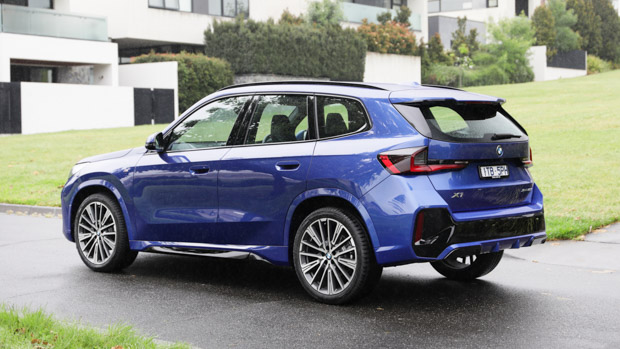
Also, the 360-camera system, with adaptive viewing forward and rear in tandem with steering input, is superb.
The xDrive20i gets the fulsome Driving Assistance Professional bundle that includes forward and reversing AEB and steering assistance to compliment the usual array of expected active safety assistance. On test, everything fitted performed transparently and without glitch or foible.
Euro NCAP awarded the U11 X1 a five-star rating in October this year. However, the new third-generation range remains unrated by ANCAP.
The third-generation X1 has copped a major interior rethink both in look and in the user interface. Like the exterior design, the cabin is in line with BMW’s contemporary styling ethos, one that robs liberally from some of the bold steps of its electric ‘i’ models.
Key to the new look is the dual-screen display, which follows a Mercedes-Benz lead if here in a fetching curved format.
It’s big on wow factor and works in tandem with the ‘i-styled’ floating centre console – complete with stubby Volkswagen-esque transmission selector – and the new-school wheel design to bring a slick freshness to the front end of the cabin accommodation.
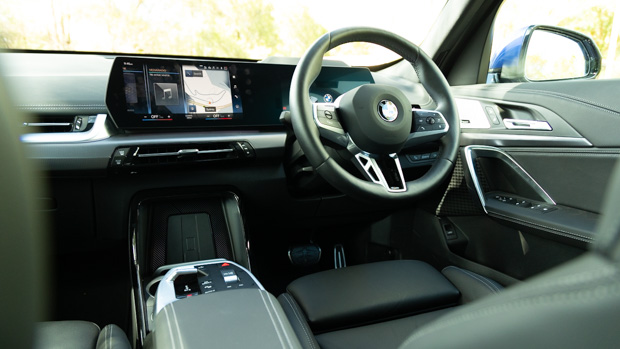
The dual screen also flaunts fresh content and skins, the Operating System 8 of the multimedia downright bombastic in its colourful, razor-sharp visual assault.
All of the new eyecandy is complemented by a cabin space minted in a quality vibe with solid material choice, styled with interesting aesthetic twists that still manages to maintain an indicative BMW identity.
However, in general, the interior execution is a bit hit and miss.
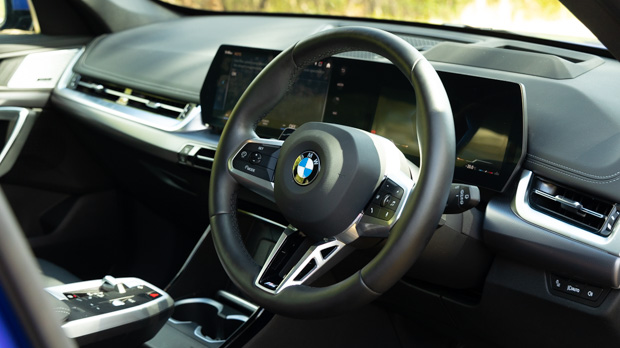
Let’s start with window dressing. The screens look glorious, though the mixed screen size – 10.7-inch infotainment, 10.25-inch driver screen – appears slightly odd.
Initially, the driver’s screen appears about centimetre to the left of an ideal central location. That is until you realise it’s actually the wheel that skews slightly right against the natural symmetry. Nitpicky, but still…
The angular display skin theme, that’s customisable, is clearer and simpler than some of BMW’s recent efforts, but its content still lacks quick-glance legibility.
Another miss is that, now BMW has omitted the old handy iDrive controller, most vehicle function adjustment is via the shiny multimedia screen, which becomes a mess of unsightly, oily finger smudges from the moment you start using it.
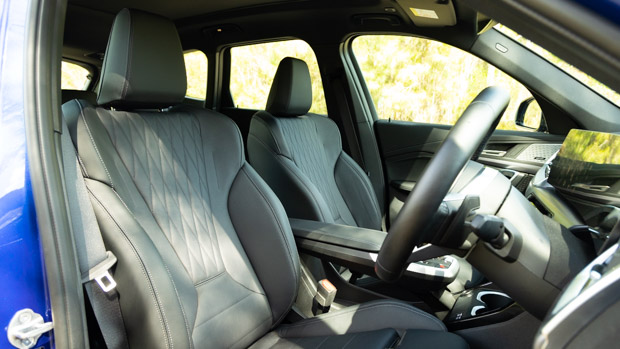
While the multimedia OS8 content looks slick, its tiling and submenuing interface is quite distracting…especially digging four levels deep to turn off stop-start.
The climate control is also via the screen and it’s more confusing than it needs to. It also seems to offer fan speed but no automatic temperature regulation (strangely).
The floating centre console looks great and brings a lot of oddment storage underneath…though actually accessing the storage tray to fetch oddment is extremely awkward.
The M Sport wheel is very, very…very chunky. And while the sporty electric pews with their lovely Vernasca leather trim feature seat heating and memory functionality, there’s no lumbar adjustment, be it mechanical or electric. And the sharp bolster on the seat base gets very comfortable during entry and egress.
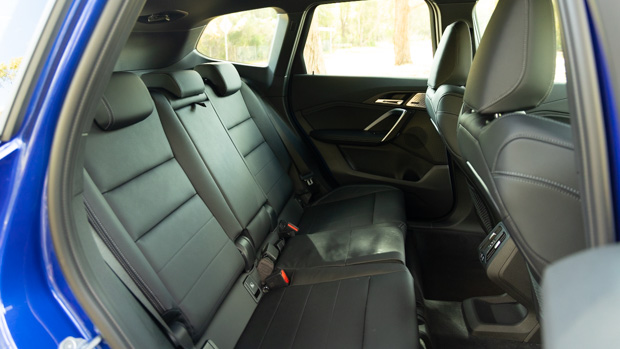
It is a well presented and very likeable cabin and these are mostly small gripes that might only annoy some users. But small annoyances do compound themselves into a largely unrewarding experience when there are so many of them.
You do get dual climate control, wireless Apple CarPlay and Android Auto and a neat slanted inductive charge pad, though little of the 20i cabin fit-out – bar features such as a head-up display – are exclusive to the top-spec variant, including the glamorous dual-screen effect.
Rear room is fantastic. And, frankly, there’s little to bitch about in a second row that feels so roomy that it’s certifiably midsized.
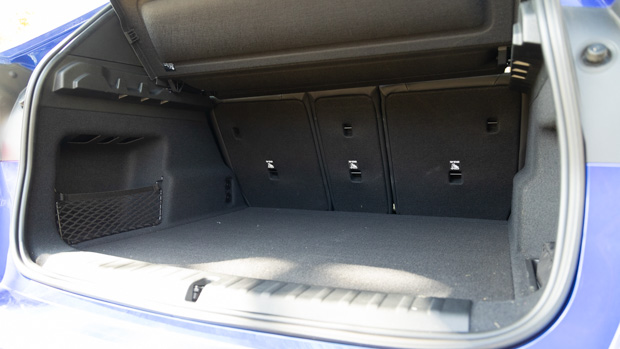
The split slide and tilt rear seat arrangement is excellent in offering tailor-fit comfort and if there’s a markdown here, it’s that the handy slide functionality is only offered as part of the cost-optional Enhancement Package. Dual USB-C port and rear air vents are, thankfully, standard issue.
Boot space is a fulsome 540 litres – huge for a small SUV – if presumably including the hidden compartment area under the floor, as the load area above seems decent if not quite as voluminous as the figure suggests.
The compartment looks large enough to fit a space saver spare though X1 only fits an inflator kit. The 40:20:40 split-fold rear seat backs do liberate as much as 1600 litres converted to a two-seater.
The new X1 arrived in tandem with BMW Australia’s shift from a subpar three-year warranty to a decent, somewhat industry standard five-star/unlimited-kilometre warranty, applied to vehicles sold after October 1st.
BMW offers a Service Inclusive Basic package at a very reasonable $1800 for five years and 80,000kms of coverage.
Of the available ConnectedDrive services offered by BMW, the xDrive20i comes with three-year subscriptions to real-time traffic updates, news and weather notification, Concierge services and sat-nav mapping updates.
The xDrive20i M Sport brings a combined fuel consumption claim of 7.2L/100kms. On test, recorded real-world consumption ranged from high fives for extra urban through to plus-eight litres for heavily trafficked urban commuting. It demands a minimum of 95RON fuel in its 45-litre tanks.
Back when we reviewed the sDrive18i, we claimed that, provided you stumped up for the Enhancement Package, the entry version was all the new X1 you’ll really need.
Its plus-sized accommodation, slick style and its hit list of inclusive new-gen features – including the dual-digital screen effect – makes for a compelling package for what sits as an enticing circa-$58,500 proposition.
The high-spec xDrive20i here, with the excesses of M Sport, the Enhancement Package, its fancy leather and over-sized rolling stock, sails almost $20k higher than the 18i that confidently ticks so many needs – and good many wants – boxes.
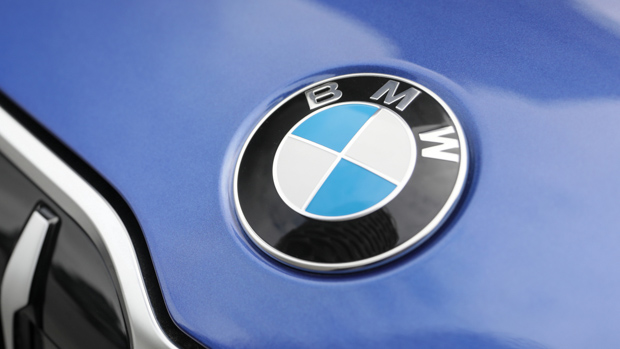
And the considerable upcharge just doesn’t return nearly enough dividend for an example sailing well above $80k on road.
All the M Sporty accoutrement simply makes promises the 20i experience just can’t deliver. Perhaps if this was the 28i spec offered overseas – 180kW, 6.4-second 0-100km/h claim – it might make a more justifiable case for its considerable outlay.
On the flipside, perhaps a cleanskin xDrive20i, without our tester’s $8800 worth of bling, might’ve drummed up more critical enthusiasm. It’s hard to imagine it’d lose any of the third-gen X1’s core goodness and it could possibly ride a little nicer sans the M suspension, too.
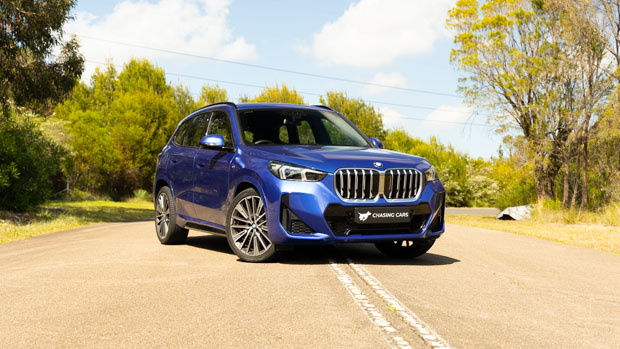
There are also many little niggles that do, in combination, carve out some fair room for general improvement. One imagines they could easily be massaged away during the U11 lifecycle.
This new X1 generation is overwhelmingly better than the old F48 and more likeable for it. And, size wise, it certainly fits the mould a good many prospective X3 owners hope to fill.
It’s upmarket and slickly contemporary without losing its inimitable BMW vibe. It’s just that the package assessed here does more to rob from the X1’s appeal than it does to enhance it.
Key specs (as tested)
About Chasing cars
Chasing Cars reviews are 100% independent.
Because we are powered by Budget Direct Insurance, we don’t receive advertising or sales revenue from car manufacturers.
We’re truly independent – giving you Australia’s best car reviews.
The estimate provided does not take into account your personal circumstances but is intended to give a general indication of the cost of insurance, in order to obtain a complete quote, please visit www.budgetdirect.com.au. Estimate includes 15%^ online discount.
^Conditions Apply
Budget Direct Insurance arranged by Auto & General Services Pty Ltd ACN 003 617 909(AGS) AFSL 241 411, for and on behalf of the insurer, Auto & General Insurance Company Limited(ABN 42 111 586 353, AFSL 285 571).Because we don’t know your financial needs, we can’t advise you if this insurance will suit you. You should consider your needs and the Product Disclosure Statement before making a decision to buy insurance. Terms and conditions apply.
Indicative quote based on assumptions including postcode , 40 year old male with no offences, licence suspensions or claims in the last 5 years, a NCD Rating 1 and no younger drivers listed. White car, driven up to 10,000kms a year, unfinanced, with no modifications, factory options and/or non-standard accessories, private use only and garaged at night.
^Online Discounts Terms & Conditions
1. Discounts apply to the premium paid for a new Budget Direct Gold Comprehensive Car Insurance, Third Party Property Only or Third Party Property, Fire & Theft Insurance policy initiated online on or after 29 March 2017. Discounts do not apply to optional Roadside Assistance.
2. Discounts do not apply to any renewal offer of insurance.
3. Discounts only apply to the insurance portion of the premium. Discounts are applied before government charges, taxes, levies and fees, including instalment processing fees (as applicable). The full extent of discounts may therefore be impacted.
4. We reserve the right to change the offer without notice.